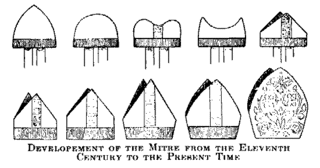
An episcopal polity is a hierarchical form of church governance in which the chief local authorities are called bishops. It is the structure used by many of the major Christian Churches and denominations, such as the Catholic, Eastern Orthodox, Oriental Orthodox, Church of the East, Anglican, and Lutheran churches or denominations, and other churches founded independently from these lineages.
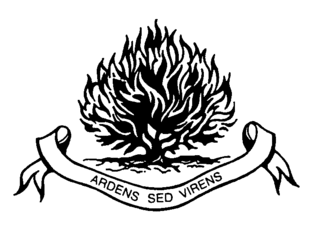
Presbyterianism is a part of the Reformed tradition within Protestantism that traces its origin to Church of Scotland.

The Church of Scotland, also known by its Scots language name, the Kirk, is the national church of Scotland. It is Presbyterian, having no head of faith or leadership group, and adheres to the Bible and Westminster Confession; the Church of Scotland celebrates two sacraments, Baptism and the Lord's Supper, as well as five other rites, such as confirmation and matrimony. It is a member of the World Communion of Reformed Churches.
The Scottish Episcopal Church is the ecclesiastical province of the Anglican Communion in Scotland.
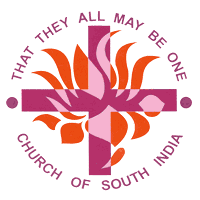
The Church of South India (CSI) is a united Protestant Church, being the second-largest Christian church in India based on the number of members; it is the result of union of a number of Protestant churches in South India.

Samuel Seabury was the first American Episcopal bishop, the second Presiding Bishop of the Episcopal Church in the United States of America, and the first Bishop of Connecticut. He was a leading Loyalist in New York City during the American Revolution, a known rival of Alexander Hamilton, and an enslaver.

The Non-juring schism was a split in the established churches of England, Scotland and Ireland, following the deposition and exile of James II and VII in the 1688 Glorious Revolution. As a condition of office, clergy were required to swear allegiance to the ruling monarch; for various reasons, some refused to take the oath to his successors William III and Mary II. These became known as Non-juring, from the Latin verb iūrō, or jūrō, meaning "swear an oath".

The history of the Anglican Communion may be attributed mainly to the worldwide spread of British culture associated with the British Empire. Among other things the Church of England spread around the world and, gradually developing autonomy in each region of the world, became the communion as it exists today.
The Reformed Episcopal Church (REC) is an Anglican church of evangelical Episcopalian heritage. It was founded in 1873 in New York City by George David Cummins, formerly a bishop of the Protestant Episcopal Church.

The Anglican ministry is both the leadership and agency of Christian service in the Anglican Communion. "Ministry" commonly refers to the office of ordained clergy: the threefold order of bishops, priests and deacons. More accurately, Anglican ministry includes many laypeople who devote themselves to the ministry of the church, either individually or in lower/assisting offices such as lector, acolyte, sub-deacon, Eucharistic minister, cantor, musicians, parish secretary or assistant, warden, vestry member, etc. Ultimately, all baptized members of the church are considered to partake in the ministry of the Body of Christ.

The history of the Episcopal Church in the United States of America has its origins in the Church of England, a church which stresses its continuity with the ancient Western church and claims to maintain apostolic succession. Its close links to the Crown led to its reorganization on an independent basis in the 1780s. In the nineteenth and early twentieth centuries, it was characterized sociologically by a disproportionately large number of high status Americans as well as English immigrants; for example, more than a quarter of all presidents of the United States have been Episcopalians. Although it was not among the leading participants of the abolitionist movement in the early 19th century, by the early 20th century its social engagement had increased to the point that it was an important participant in the Social Gospel movement, though it never provided much support for the Prohibitionist movement. Like other mainline churches in the United States, its membership decreased from the 1960s. This was also a period in which the church took a more open attitude on the role of women and toward homosexuality, while engaging in liturgical revision parallel to that of the Roman Catholic Church in the post Vatican II era.

Thomas John Claggett was the first bishop of the newly formed American Episcopal Church, U.S.A. to be consecrated on American soil and the first bishop of the recently established (1780) Episcopal Diocese of Maryland.
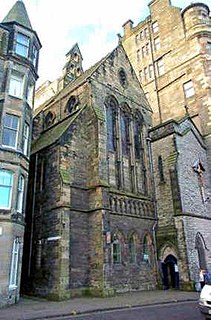
Old Saint Paul's is an historic church of the Scottish Episcopal Church in the heart of Edinburgh's Old Town in Scotland. It is one of the original congregations of the Scottish Episcopal Church, part of the Anglican Communion, which evolved with the adoption of Presbyterian governance by the established Church of Scotland.

The Episcopal Church (TEC), based in the United States with additional dioceses elsewhere, is a member church of the worldwide Anglican Communion. It is a mainline Christian denomination and is divided into nine provinces. The presiding bishop of the Episcopal Church is Michael Bruce Curry, the first African-American bishop to serve in that position.

The history of Christianity in Scotland includes all aspects of the Christianity in the region that is now Scotland from its introduction up to the present day. Christianity was first introduced to what is now southern Scotland during the Roman occupation of Britain, and is often said to have been spread by missionaries from Ireland in the fifth century and is much associated with St Ninian, St Kentigern and St Columba, though “they first appear in places where churches had already been established”. The Christianity that developed in Ireland and Scotland differed from that led by Rome, particularly over the method of calculating Easter, and the form of tonsure until the Celtic church accepted Roman practices in the mid-seventh century.

The reign of Elizabeth I of England, from 1558 to 1603, saw the start of the Puritan movement in England, its clash with the authorities of the Church of England, and its temporarily effective suppression as a political movement in the 1590s by judicial means. This of course led to the further alienation of Anglicans and Puritans from one another in the 17th century during the reign of King James (1603-1625) and the reign of King Charles I (1625-1649), that eventually brought about the English Civil War (1642-1651), the brief rule of the Puritan Lord Protector of England Oliver Cromwell (1653-1658), the English Commonwealth (1649-1660), and as a result the political, religious, and civil liberty that is celebrated today in all English speaking countries.

A Qualified Chapel, in eighteenth and nineteenth century Scotland, was an Episcopal congregation that worshipped liturgically but accepted the Hanoverian monarchy and thereby "qualified" under the Scottish Episcopalians Act 1711 for exemption from the penal laws against the Episcopal Church of Scotland.

Scottish religion in the eighteenth century includes all forms of religious organisation and belief in Scotland in the eighteenth century. This period saw the beginnings of a fragmentation of the Church of Scotland that had been created in the Reformation and established on a fully Presbyterian basis after the Glorious Revolution. These fractures were prompted by issues of government and patronage, but reflected a wider division between the Evangelicals and the Moderate Party. The legal right of lay patrons to present clergymen of their choice to local ecclesiastical livings led to minor schisms from the church. The first in 1733, known as the First Secession and headed by figures including Ebenezer Erskine, led to the creation of a series of secessionist churches. The second in 1761 led to the foundation of the independent Relief Church.
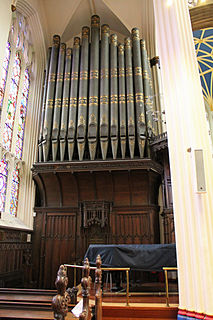
Church music in Scotland includes all musical composition and performance of music in the context of Christian worship in Scotland, from the beginnings of Christianisation in the fifth century, to the present day. The sources for Scottish Medieval music are extremely limited due to factors including a turbulent political history, the destructive practices of the Scottish Reformation, the climate and the relatively late arrival of music printing. In the early Middle Ages, ecclesiastical music was dominated by monophonic plainchant, which led to the development of a distinct form of liturgical Celtic chant. It was superseded from the eleventh century by more complex Gregorian chant. In the High Middle Ages, the need for large numbers of singing priests to fulfill the obligations of church services led to the foundation of a system of song schools, to train boys as choristers and priests. From the thirteenth century, Scottish church music was increasingly influenced by continental developments. Monophony was replaced from the fourteenth century by the Ars Nova consisting of complex polyphony. Survivals of works from the first half of the sixteenth century indicate the quality and scope of music that was undertaken at the end of the Medieval period. The outstanding Scottish composer of the first half of the sixteenth century was Robert Carver, who produced complex polyphonic music.

















